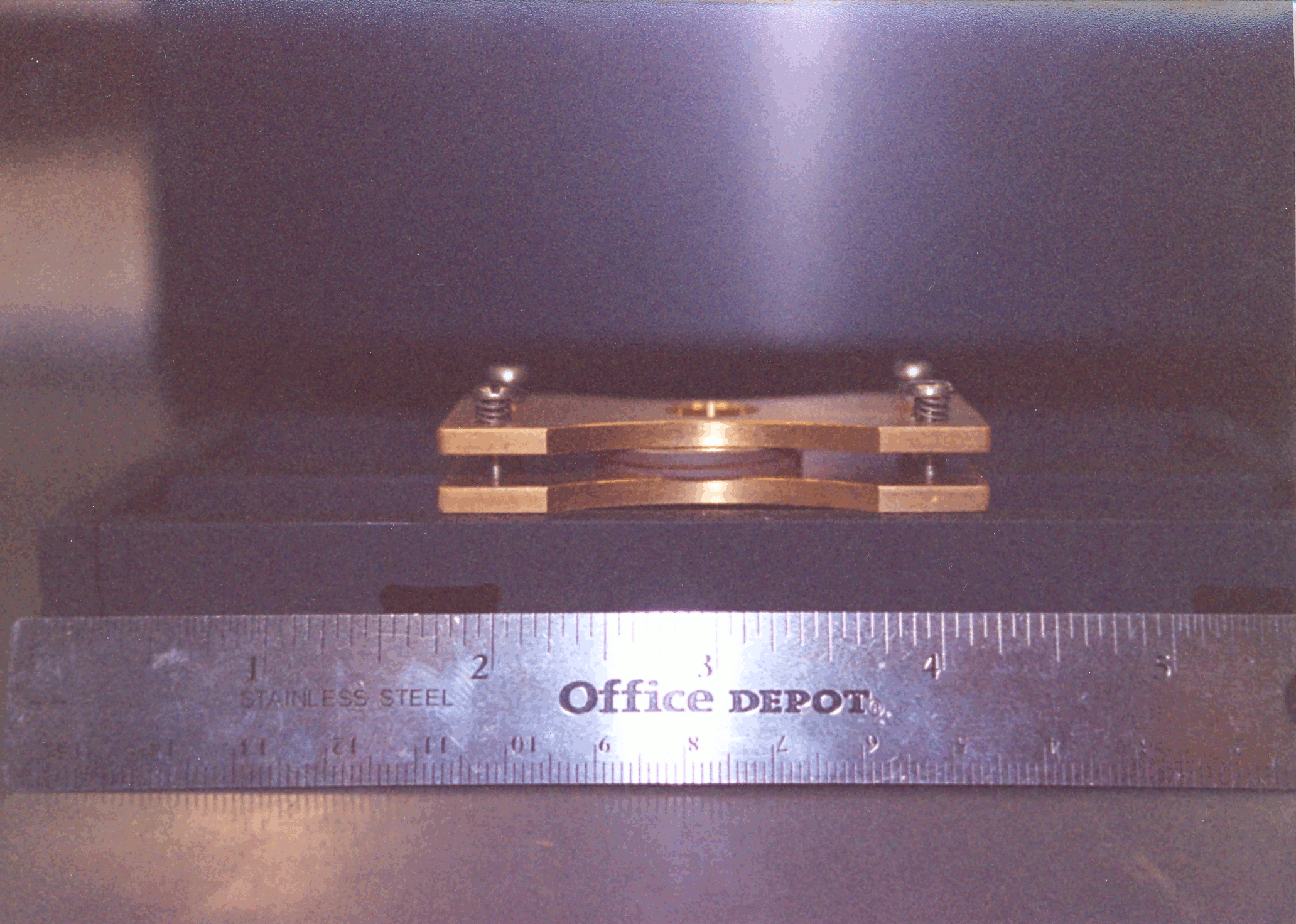
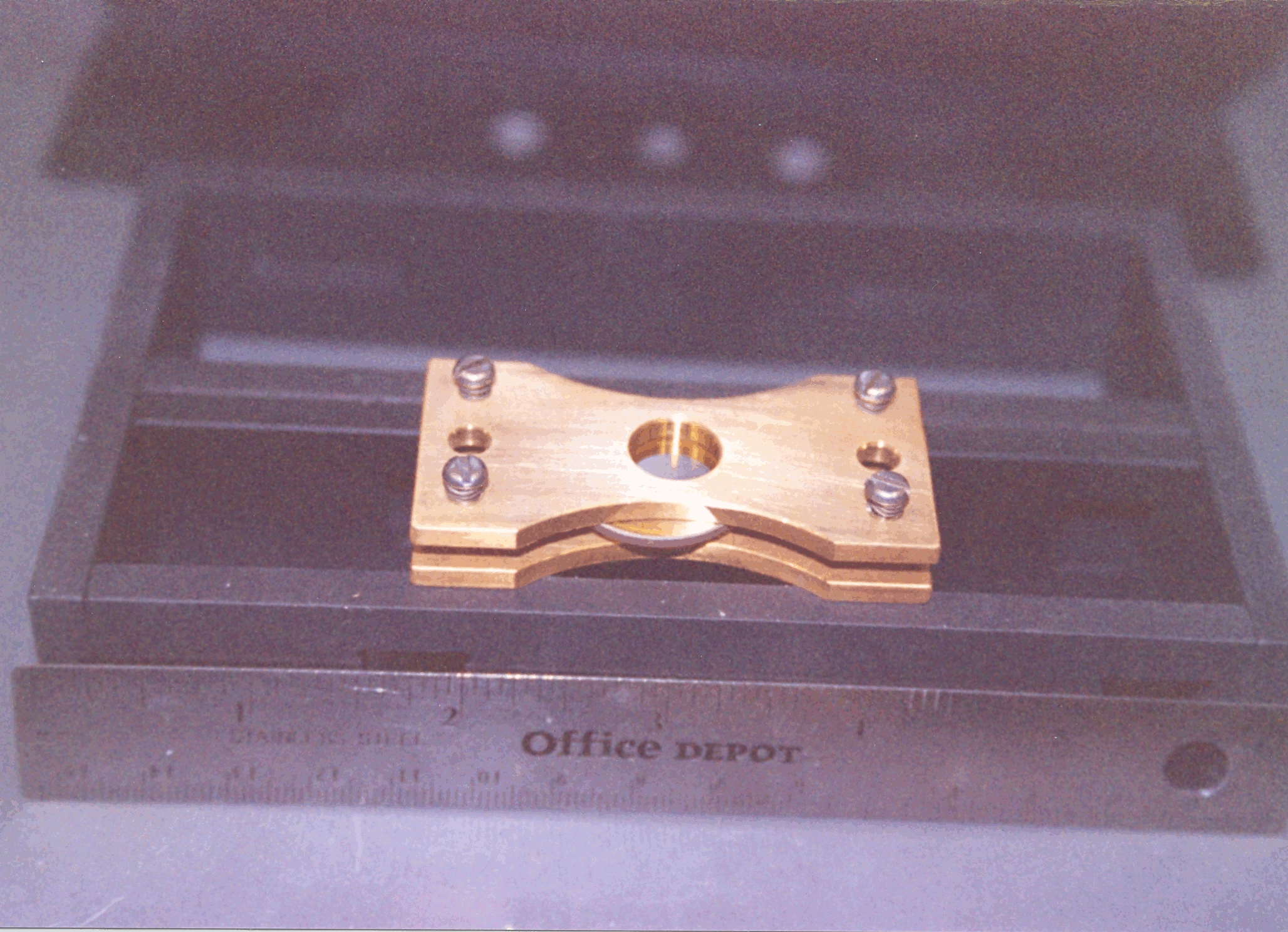
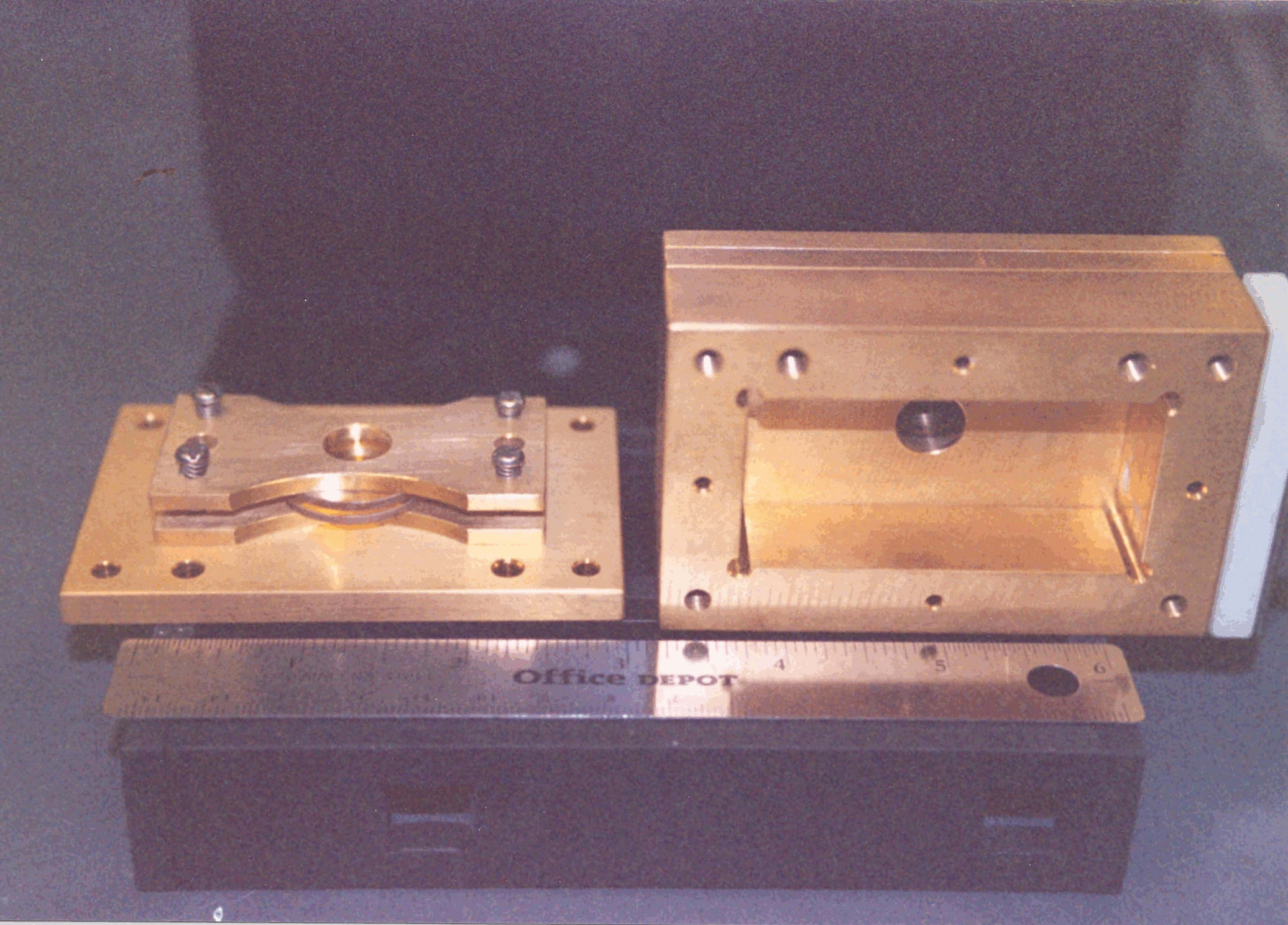
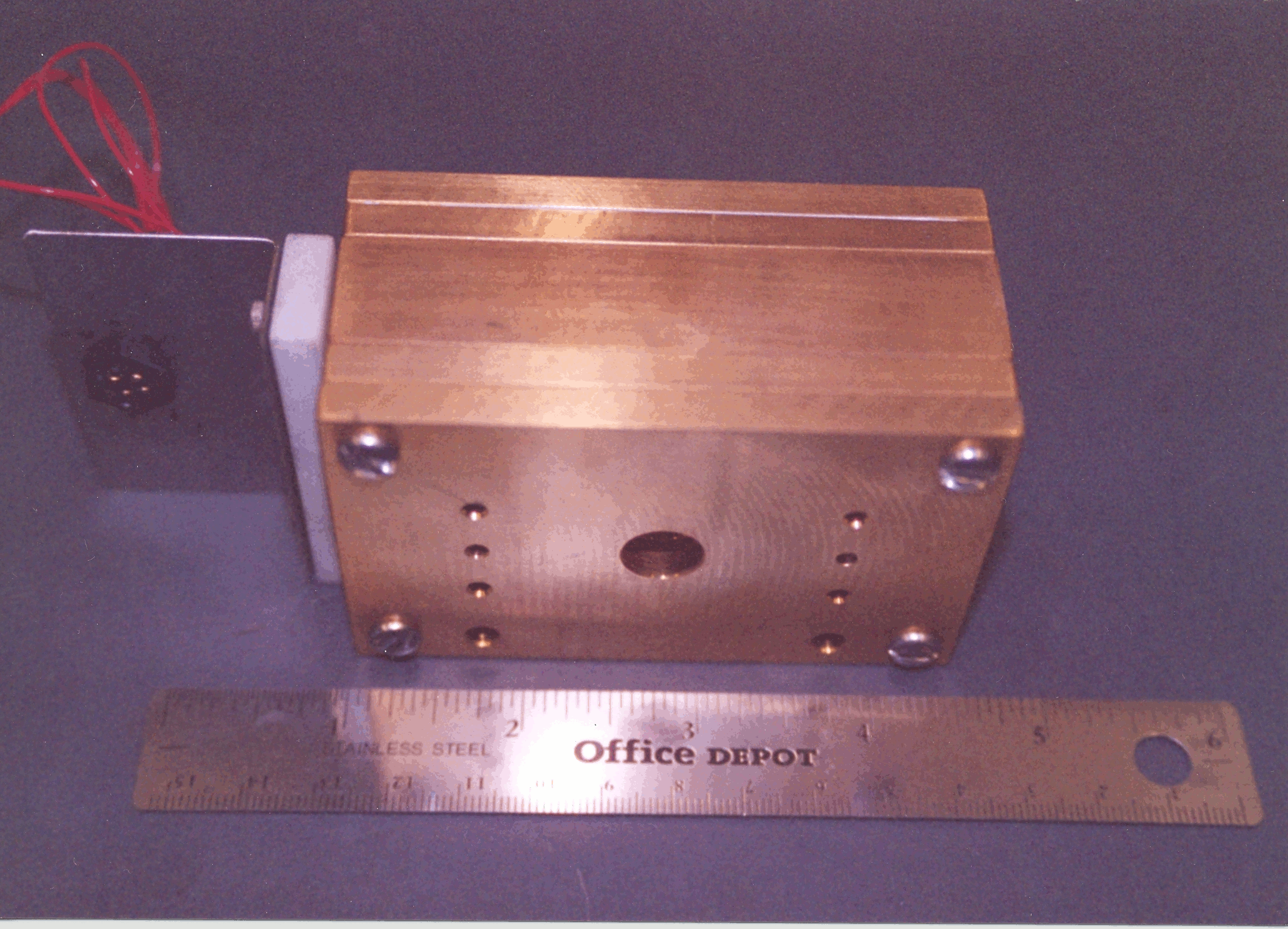
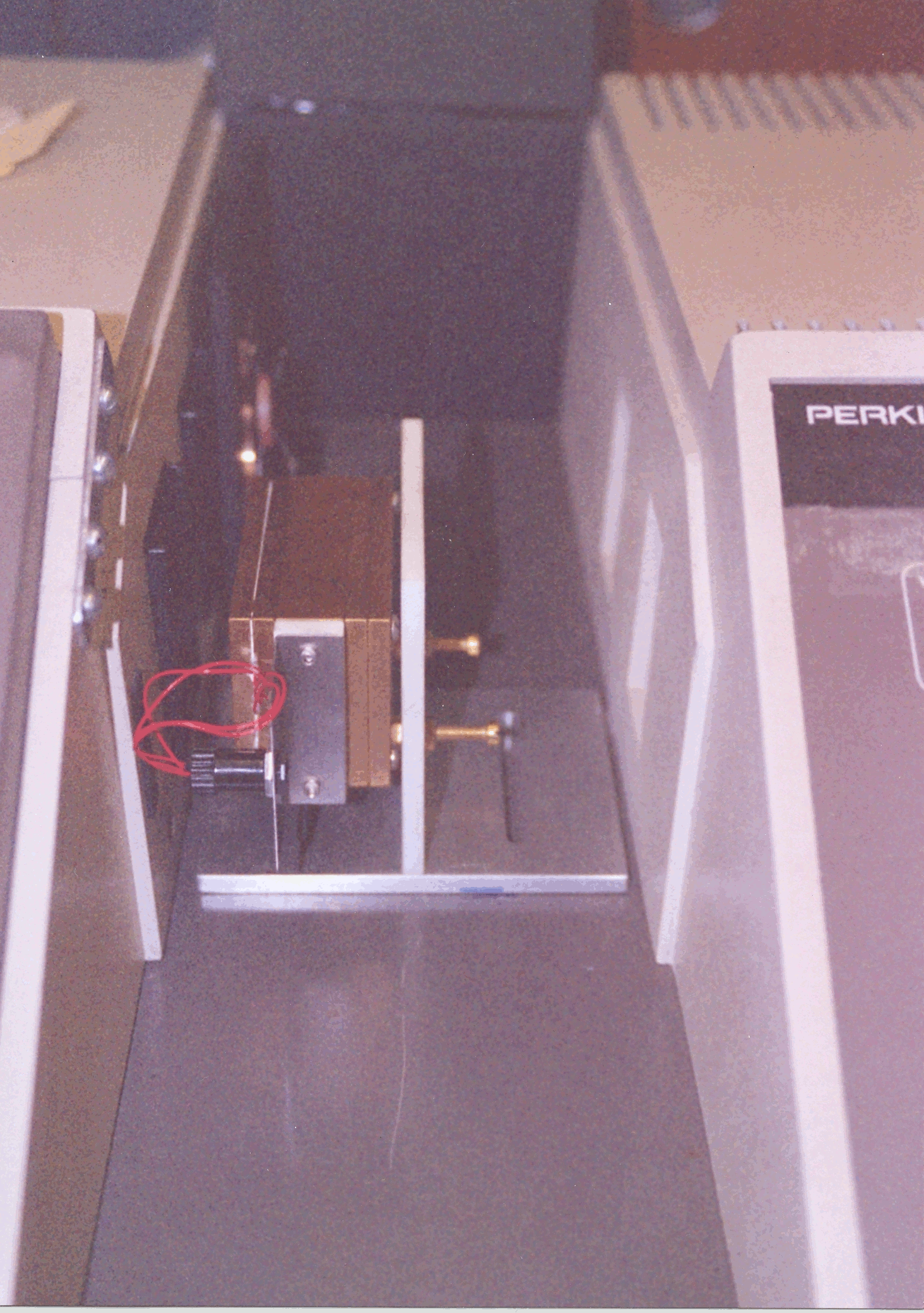
 |
Two pieces of brass (with a hole in the center) sandwich together two flat ZnSe (zinc selenide) crystals. The crystals are IR transparent and are spaced apart with thin (several micrometers thick) mylar. The polymer thin film is placed between the crystals using the capillary effect. The springs on the screws allow for the brass to fit snugly to the crystals and allow for thermal expansion without cracking them. |
 |
A top-down view of the brass holder. The two holes on the edges allow the holder to be attached to the oven itself. |
 |
Here, the crystal holder is attached to one of the faces of the oven. On the back side of the oven are two brass plates which sandwich a large flat resistor (that generates the heat for the oven) and a small thermocouple (to measure the temperature of the oven). The temperature inside the oven is fairly stable because of the sheer mass of the brass. If temperature fluctuation were an issue, we would have insulated the exterior with micarta (composite material that is temperature insulating and machinable)--the stand that holds the oven was also made of micarta. |
 |
The oven is closed up with the crystal and polymer inside. A computer will control the current to the resistor (and thereby the temperature of the oven) as well as read the resistance of the thermocouple (to determine the current oven temperature). |
 |
Finally, the oven is placed in the spectrometer. The stand has height adjustments on it so that the hole through the oven can be placed right in the path of the IR beam. The particular spectrometer is a Perkin-Elmer spectrometer that had been used by the FDA. Once all the software was completed we actually collected data on a much newer FFT spectrometer in the chemistry department. |